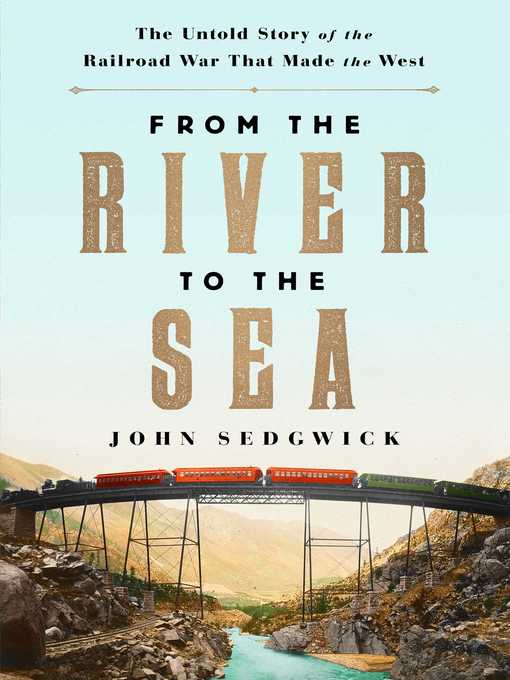
From the River to the Sea
The Untold Story of the Railroad War That Made the West
- اطلاعات
- نقد و بررسی
- دیدگاه کاربران
نقد و بررسی

January 1, 2021
In 1869, America's first transcontinental railroad joined East and West but left plenty of land to be conquered by the clickety-clack of trains. Aided by federal grants, two daring railway men launched the Rio Grande and Santa Fe railways, which led to virtual warfare involving mercenaries and local militia. From the author of Blood Moon; with a 100,000-copy first printing.
Copyright 2021 Library Journal, LLC Used with permission.

April 12, 2021
Novelist and historian Sedgwick (Blood Moon) delivers a dense yet colorful history of the “frenzied competition” between two railroad tycoons to lay tracks between Colorado and the Pacific Ocean. Sedgwick casts Rio Grande railway owner Gen. William Palmer, a “certified Civil War hero” who built a castle in Colorado Springs to lure his 19-year-old bride west, and William Barstow Strong, the business-minded president of the much-larger Santa Fe railroad, as polar opposites. Yet Strong’s 1877 offer to lease 30% of Palmer’s railroad set off an epic clash that united the two men in a single-minded drive to outdo the other. Sedgwick chronicles their race to lay claim to routes between Colorado and southern California in scrupulous detail, documenting press campaigns, courtroom showdowns, and standoffs between the private armies of both railroads. According to Sedgwick, the struggle between Palmer and Strong was crucial to the development of southwestern cities including Santa Fe and Albuquerque, and transformed L.A. from a “sun-splashed Spanish pueblo... to a bustling city.” Though generalists may have a tough time keeping track of all the technical details, railroad buffs will be riveted.

April 15, 2021
The history of a railroad gold rush. Many know about the great American Transcontinental Railroad, but Sedgwick introduces us to the "longest, most expensive, and most destructive railroad war in American history." It's the tale of a fight between two men and their creations: Civil War Gen. William Jackson Palmer and his Denver & Rio Grande Railway and the ambitious William Barstow Strong and his Atchison, Topeka and Santa Fe Railway. Palmer and Strong battled for "the chance to develop and define the modern West as no one else could," and it was personal. Both had their sights set on the Pacific, but first came the treacherous Raton Pass on the Colorado-New Mexico border. Originally, the train lines ran perpendicular to each other, but with each new track and developed property alongside much of the land they got for free, they became "entwined." Sedgwick recounts the many strategies employed to find the best routes through the Southwest, introducing us to many colorful characters: financiers, entrepreneurs, surveyors, law enforcement (Wyatt Earp and Bat Masterson), and even a silver drill-touting Oscar Wilde. After Strong made it to the pass first, Palmer turned his attention to the towering rock faces of Royal Gorge in the Arkansas Valley and its rich silver mines in nearby Leadville. Sedgwick's narrative meanders in his discussion of Palmer's extensive legal and financial maneuvers to protect his Rio Grande route to Leadville. Railway baron Jay Gould, with his own ambitions, worked a deal that would permit the two railways to head westward on separate routes. Strong lost Leadville to Palmer, but he was now able to grow in the Southwest. A financial deal with Southern Pacific let Strong take a southern route; on May 31, 1887, his line reached Los Angeles. Sedgwick emphasizes the financial over the dramatic; readers may wish for more about the building of the railways: the day-to-day laying of track, the workers' experiences, how they overcame geographical challenges, etc. Sturdy popular history, but numerous sidetracks covering business and money slow the race west.
COPYRIGHT(2021) Kirkus Reviews, ALL RIGHTS RESERVED.




دیدگاه کاربران